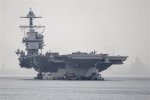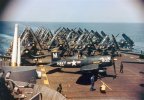-
Please take a moment and update your account profile. If you have an updated account profile with basic information on why you are on Air Warriors it will help other people respond to your posts. How do you update your profile you ask?
Go here:
Edit Account Details and Profile
You are using an out of date browser. It may not display this or other websites correctly.
You should upgrade or use an alternative browser.
You should upgrade or use an alternative browser.
Ship Photo of the Day
- Thread starter Randy Daytona
- Start date
The French battleship Richelieu, which had an unusual design of 2 quad 15” turrets forward and 3 triple 6” turrets aft. The quad turrets might better thought of as dual twin turrets as they were internally divided in half to prevent a direct hit from taking out all 4 guns.
The 15” cannons were given US superheavy 15” shells when the Richelieu visited the US for refitting. The shells weighed 1950 lbs and had a maximum range of 45,600 yards. Although the battleship had the outdated anti-surface battery instead of a more modern dual purpose weapon, it was still a very capable ship with strong firepower, superb protection and 32 knot speed - an excellent design that was eventually decommissioned only in 1967.
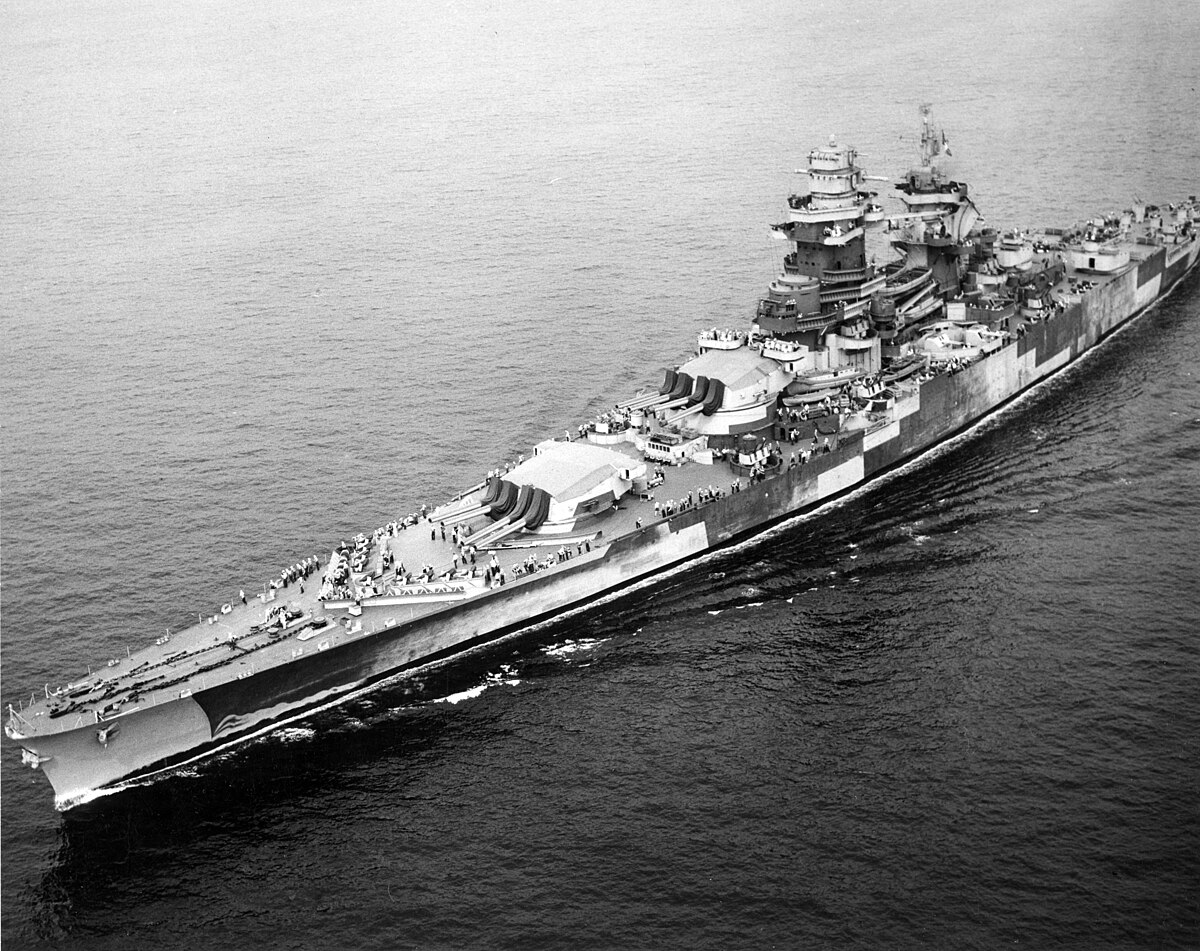
 en.m.wikipedia.org
en.m.wikipedia.org
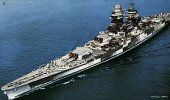
Richelieu in September 1943 after her refit
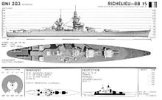
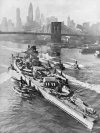
Richelieu arrives in New York with her damaged turret. The uppermost fire control director on the fore tower had to be dismantled for her to pass under the Brooklyn Bridge to the New York Navy Yard
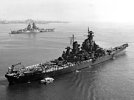
Richelieu (left distance) and the US battleship USS New Jersey at anchor in Hampton Roads, September 1943
The 15” cannons were given US superheavy 15” shells when the Richelieu visited the US for refitting. The shells weighed 1950 lbs and had a maximum range of 45,600 yards. Although the battleship had the outdated anti-surface battery instead of a more modern dual purpose weapon, it was still a very capable ship with strong firepower, superb protection and 32 knot speed - an excellent design that was eventually decommissioned only in 1967.

French battleship Richelieu - Wikipedia

Richelieu in September 1943 after her refit


Richelieu arrives in New York with her damaged turret. The uppermost fire control director on the fore tower had to be dismantled for her to pass under the Brooklyn Bridge to the New York Navy Yard

Richelieu (left distance) and the US battleship USS New Jersey at anchor in Hampton Roads, September 1943
Finally found, Ernest Shackleton’s the Endurance after being crushed by Antarctic Ice back in 1915. By being sunk in such frigid waters, the wooden ship is exceptionally well preserved.
144 ft long with a beam of 25 ft, the Endurance had both steam and sail propulsion and was built with exceptionally strong construction as noted in the wikipedia article.

 en.m.wikipedia.org
en.m.wikipedia.org
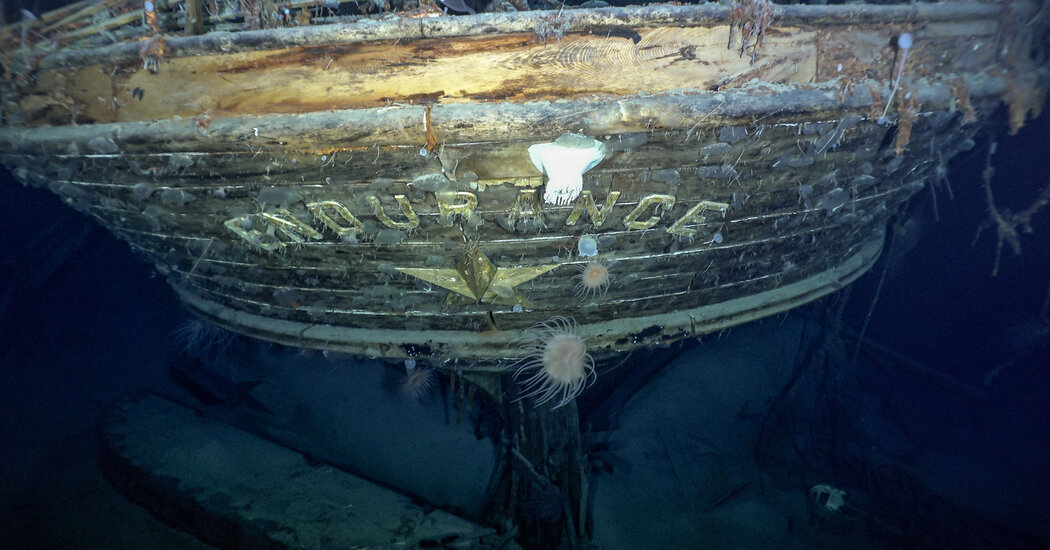
 www.nytimes.com
www.nytimes.com
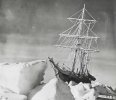
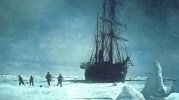
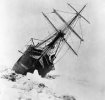
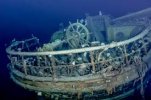
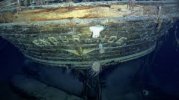
144 ft long with a beam of 25 ft, the Endurance had both steam and sail propulsion and was built with exceptionally strong construction as noted in the wikipedia article.

Endurance (1912 ship) - Wikipedia

At the Bottom of an Icy Sea, One of History’s Great Wrecks Is Found
Explorers and researchers, battling freezing temperatures, have located Endurance, Ernest Shackleton’s ship that sank in the Antarctic in 1915.





Going through family history and found a small town newspaper clipping that my dad did a summer cruise while in NROTC aboard the heavy cruiser USS Oregon City (CA-122)
Basically an improved Baltimore class, the Oregon City class had 2 funnels trunked into a single funnel for improved AA fields of fire. Although 10 ships were ordered, only 4 were built as they were superseded by the phenomenal Des Moines class (and if there is any single naval weapon from pre-1950 that could have a use today, the rapid fire Mark 16 8” cannon would be near the top)
Commissioned in Feb 1946 (with singer and movie star Bing Crosby on hand) but decommissioned in Dec 1947, the Oregon City had a very short 22 month active life and served as flagship of Fourth Fleet. After decommissioning, she stayed in the reserve fleet until 1970.
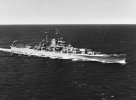
USS Oregon City underway on 17 June 1946



Basically an improved Baltimore class, the Oregon City class had 2 funnels trunked into a single funnel for improved AA fields of fire. Although 10 ships were ordered, only 4 were built as they were superseded by the phenomenal Des Moines class (and if there is any single naval weapon from pre-1950 that could have a use today, the rapid fire Mark 16 8” cannon would be near the top)
Commissioned in Feb 1946 (with singer and movie star Bing Crosby on hand) but decommissioned in Dec 1947, the Oregon City had a very short 22 month active life and served as flagship of Fourth Fleet. After decommissioning, she stayed in the reserve fleet until 1970.

USS Oregon City underway on 17 June 1946



Last edited:
Fifth of the 24 Essex class carriers, USS Intrepid (CV-11) had a long life extended life following a major reconstruction and survived to be a museum ship.
Arriving in the Pacific at the end of 1943, the Intrepid’s first action was with Task Force 58. Working in conjunction with her sister ship Essex and the light carrier Cabot, the three ships launched aircraft against Kwajalein Atoll.
Intrepid fought in most of the major battles of the Pacific taking a torpedo hit astern that jammed the rudder. Having difficulty steering, the crew hastily made a sail of spare canvas to use the strong winds to help point the ship in the proper direction. She was also hit not once, not twice but 4 times by kamikazes.
In the mid-1950’s, she was rebuilt with steam catapults and an angled deck, being reclassified as CVA-11. Later she was modified again to act as an anti-submarine carrier. CVS-11. While in this configuration, she was the recovery ship for a Mercury space launch and the first Gemini space launch.
As ops tempo in Vietnam increased, Intrepid was re-outfitted and manned the line in the late ‘60’s and early 70’s. On the Ides of March 1974, she was decommissioned for the final time but saved as a museum ship.
https://m.intrepidmuseum.org/.
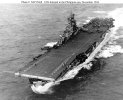
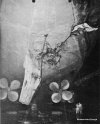
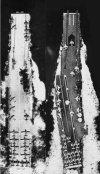
Top views of USS Intrepid after SCB-27C (left) and SCB-125(right).
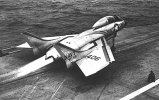
Arriving in the Pacific at the end of 1943, the Intrepid’s first action was with Task Force 58. Working in conjunction with her sister ship Essex and the light carrier Cabot, the three ships launched aircraft against Kwajalein Atoll.
Intrepid fought in most of the major battles of the Pacific taking a torpedo hit astern that jammed the rudder. Having difficulty steering, the crew hastily made a sail of spare canvas to use the strong winds to help point the ship in the proper direction. She was also hit not once, not twice but 4 times by kamikazes.
In the mid-1950’s, she was rebuilt with steam catapults and an angled deck, being reclassified as CVA-11. Later she was modified again to act as an anti-submarine carrier. CVS-11. While in this configuration, she was the recovery ship for a Mercury space launch and the first Gemini space launch.
As ops tempo in Vietnam increased, Intrepid was re-outfitted and manned the line in the late ‘60’s and early 70’s. On the Ides of March 1974, she was decommissioned for the final time but saved as a museum ship.
https://m.intrepidmuseum.org/.

| USS Intrepid (CV-11) operating in the Philippine Sea in November 1944. Note F6F Hellcat fighter parked on an outrigger forward of her island. In this picture Intrepid is camouflaged to Measure 32, Design 3A. |

| The night of 17 February 1944 an aerial torpedo struck Intrepid's starboard quarter, 15 feet below her waterline, flooding several compartments and jamming her rudder hard to port. By racing her port screw and idling her starboard engine, Captain Thomas L. Sprague kept her on course until two days later strong winds swung her back and forth and tended to weathercock her with her bow pointed toward Tokyo. Sprague later confessed: "Right then I wasn't interested in going in that direction." At this point the crew fashioned a jury-rig sail of hatch covers and scrap canvas which swung Intrepid about and held her on course. Decorated by her crazy-quilt sail, the carrier stood into Pearl Harbor 24 February 1944. |

Top views of USS Intrepid after SCB-27C (left) and SCB-125(right).

| A Vought F7U-3M Cutlass of Fighter Squadron (VF) 83 launches from the aircraft carrier USS Intrepid (CVA-11) in 1954. |
The only battleship to ever launch a torpedo at another battleship was HMS Rodney (Pennant #29). (launched 8 torpedoes at Bismarck, 1 hit according to Drachinifel)
Initially designed as the N-3 with 18” main guns, the Washington Naval Treaty forced the ship to become smaller with 16” main guns. Derisively called “Rodoil“, the battleship was not a pretty ship and looked like a tanker. The main guns (3x3) were grouped in the forward / center part of the shop to shorten the armored box and save weight while 6 twin 6” mounts aft constituted the secondary battery with multiple AA guns being added over time.
Rodney was enroute to the US for a refit when news broke of the sinking of HMS Hood. Upon receipt, the captain turned his ship around and cranked it up to 25 knots (the ship was designed for a maximum of 23 knots) and was instrumental in sinking the Bismarck.
Length: 710 ft, Beam: 106 ft, Displacement: 38,000 tons at full load
Propulsion: 8 boilers produced 45,000 HP and fed 2 shafts for 23 knots.
Main armament: 9 (3x3) Mark 1 16”/45 caliber cannons firing 2,050 lbs shells out to 39,780 yards. Secondaries: 12 (6x2) 6”/50 caliber Mark XXII cannons
Armor: Belt: 14”, Deck: 6.25”, Turrets: 16”
Commissioned: 7 Dec 1927, Decommissioned: August 1946.
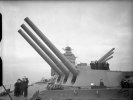
Guns of HMS Rodney at maximum elevation, 1940
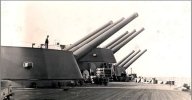
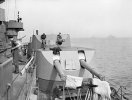
Gun turrets on HMS Rodney, 1940
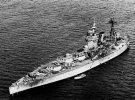
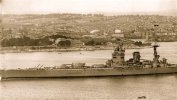
Initially designed as the N-3 with 18” main guns, the Washington Naval Treaty forced the ship to become smaller with 16” main guns. Derisively called “Rodoil“, the battleship was not a pretty ship and looked like a tanker. The main guns (3x3) were grouped in the forward / center part of the shop to shorten the armored box and save weight while 6 twin 6” mounts aft constituted the secondary battery with multiple AA guns being added over time.
Rodney was enroute to the US for a refit when news broke of the sinking of HMS Hood. Upon receipt, the captain turned his ship around and cranked it up to 25 knots (the ship was designed for a maximum of 23 knots) and was instrumental in sinking the Bismarck.
Length: 710 ft, Beam: 106 ft, Displacement: 38,000 tons at full load
Propulsion: 8 boilers produced 45,000 HP and fed 2 shafts for 23 knots.
Main armament: 9 (3x3) Mark 1 16”/45 caliber cannons firing 2,050 lbs shells out to 39,780 yards. Secondaries: 12 (6x2) 6”/50 caliber Mark XXII cannons
Armor: Belt: 14”, Deck: 6.25”, Turrets: 16”
Commissioned: 7 Dec 1927, Decommissioned: August 1946.

Guns of HMS Rodney at maximum elevation, 1940


Gun turrets on HMS Rodney, 1940


The ship that escorted USS Hornet on the Doolittle Raid and also carried General Douglas MacArthur on his return to The Philippines was the Brooklyn class light cruiser USS Nashville, CL-43. The Nashville took a kamikaze hit that killed 133 sailors, after repairs she returned to the Pacific. Immediately after Japan's surrender, the Nashville patrolled portions of the Yangtze River out of Shanghai.
In 1951, the Nashville was transferred to the Chilean Navy where she served as the Capitan Prat until 1985. She served during the 1973 Chilean coup d'etat which overthrew the government and installed General Pinochet as ruler.
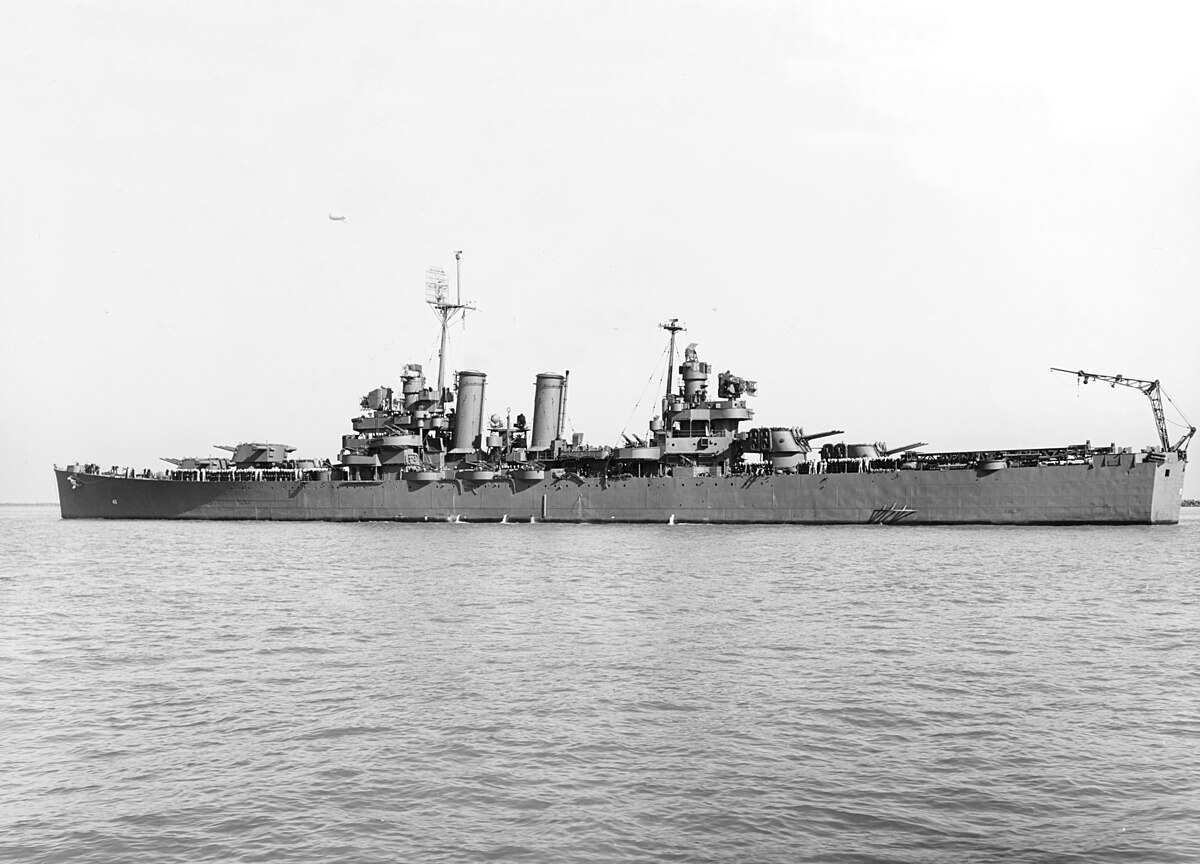
 en.wikipedia.org
en.wikipedia.org
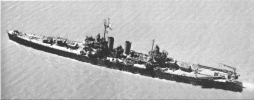
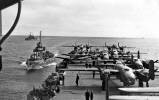
View looking aft from the island of USS Hornet (CV 8), while en route to the mission's launching point. USS Gwin (DD 433) is coming alongside, as USS Nashville (CL 43) steams in the distance. Eight of the mission's sixteen B-25B bombers are parked within view, as are two of the ship's SBD scout bombers. Note midships elevator, torpedo elevator, arresting gear and flight deck barriers in the lower portion of the photo, and 1.1" quad anti-aircraft machine gun mount at left.
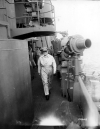
"SC192648 General Douglas MacArthur walks to the bridge on one of the cruisers of the invasion fleet. Southwest Pacific Area. 22 April 1944. USS Nashville"
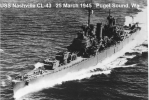
25 March 1945 while steaming into Puget Sound.
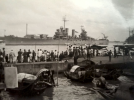
USS Nashville (CL 43), October 1945, on Yangtze River Patrol, Whang-poo River, Shanghai, China, view from Whang-poo Pier, USS Rocky Mount (AGC 3) to the right.
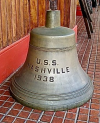
In 1951, the Nashville was transferred to the Chilean Navy where she served as the Capitan Prat until 1985. She served during the 1973 Chilean coup d'etat which overthrew the government and installed General Pinochet as ruler.

USS Nashville (CL-43) - Wikipedia


View looking aft from the island of USS Hornet (CV 8), while en route to the mission's launching point. USS Gwin (DD 433) is coming alongside, as USS Nashville (CL 43) steams in the distance. Eight of the mission's sixteen B-25B bombers are parked within view, as are two of the ship's SBD scout bombers. Note midships elevator, torpedo elevator, arresting gear and flight deck barriers in the lower portion of the photo, and 1.1" quad anti-aircraft machine gun mount at left.

"SC192648 General Douglas MacArthur walks to the bridge on one of the cruisers of the invasion fleet. Southwest Pacific Area. 22 April 1944. USS Nashville"

25 March 1945 while steaming into Puget Sound.

USS Nashville (CL 43), October 1945, on Yangtze River Patrol, Whang-poo River, Shanghai, China, view from Whang-poo Pier, USS Rocky Mount (AGC 3) to the right.

Attachments
Based on this photo, can anyone tell if this is a civilian vessel or a navy vessel? During WW2 my grandfather served mostly on the HMAS Nepal so it's possible this photo was taken aboard. He never spoke about where it was taken while he was still alive, unfortunately. My guess is it's from a civilian vessel:
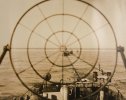
One of his best friends from the war was a guy named Leon Goldsworthy, though I never got to know him well as he died when I was young.

One of his best friends from the war was a guy named Leon Goldsworthy, though I never got to know him well as he died when I was young.
Lots of speculation here…but…the ship the image was taken from is not a typical warship like a destroyer. Looking at HMAS types they all appear to have a turreted gun from the place this picture was taken. Add to that, if you blow the image up a bit it looks like there are numbers painted in the bow of the next two ships. Their lines indicate a merchant and compared to other armed merchants it could be either HMAS Westralia, HMAS Manoora, or HMAS Kanimbla; all armed merchants later converted to infantry landing ships. The last ship in line is clearly a warship about the size of a corvette/frigate/destroyer escort. Keep in mind, all of this is pretty much hip-shot speculation. If you can get the number off the first ship in the image you might be closer to an answer.
Great question. I don’t have anything to add to Griz’s analysis other than possibly contacting www.navygeneralboard.com or a couple of the great youtube channels of Drachinifel and Battleship New Jersey.Based on this photo, can anyone tell if this is a civilian vessel or a navy vessel? During WW2 my grandfather served mostly on the HMAS Nepal so it's possible this photo was taken aboard. He never spoke about where it was taken while he was still alive, unfortunately. My guess is it's from a civilian vessel:
View attachment 34847
One of his best friends from the war was a guy named Leon Goldsworthy, though I never got to know him well as he died when I was young.
If it was a US ship, www.navsource.org would be great source. If you ever find the British and Australian equivalents of navsource, please post the links as they would be fantastic sources of information.
Best of Luck!
Duh. @Randy Daytona hit the nail on the head…
 www.navyhistory.org.au
www.navyhistory.org.au
Home - Naval Historical Society of Australia
Max the Mad Russian
Hands off Ukraine! Feet too
Rather RN Flower-class corvettethe ship the image was taken from is not a typical warship like a destroyer
Rather RN Flower-class corvette
Those look like depth-charge racks to the bottom right of the sight, right where they would be for a Flower-class.

